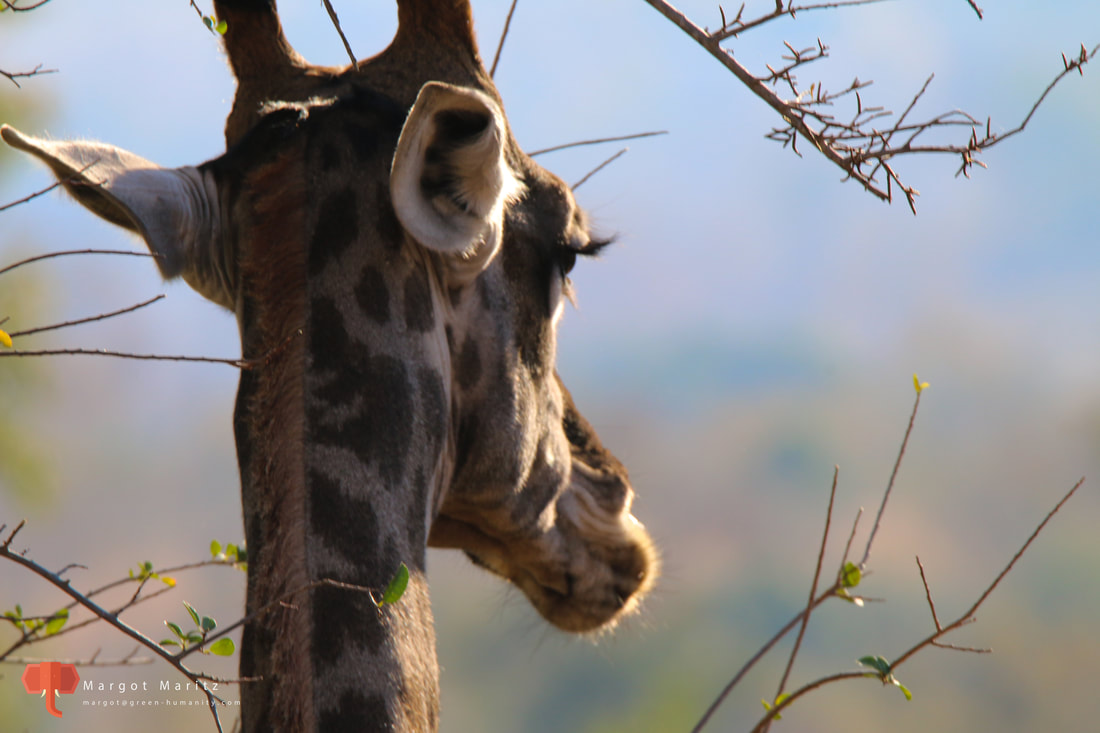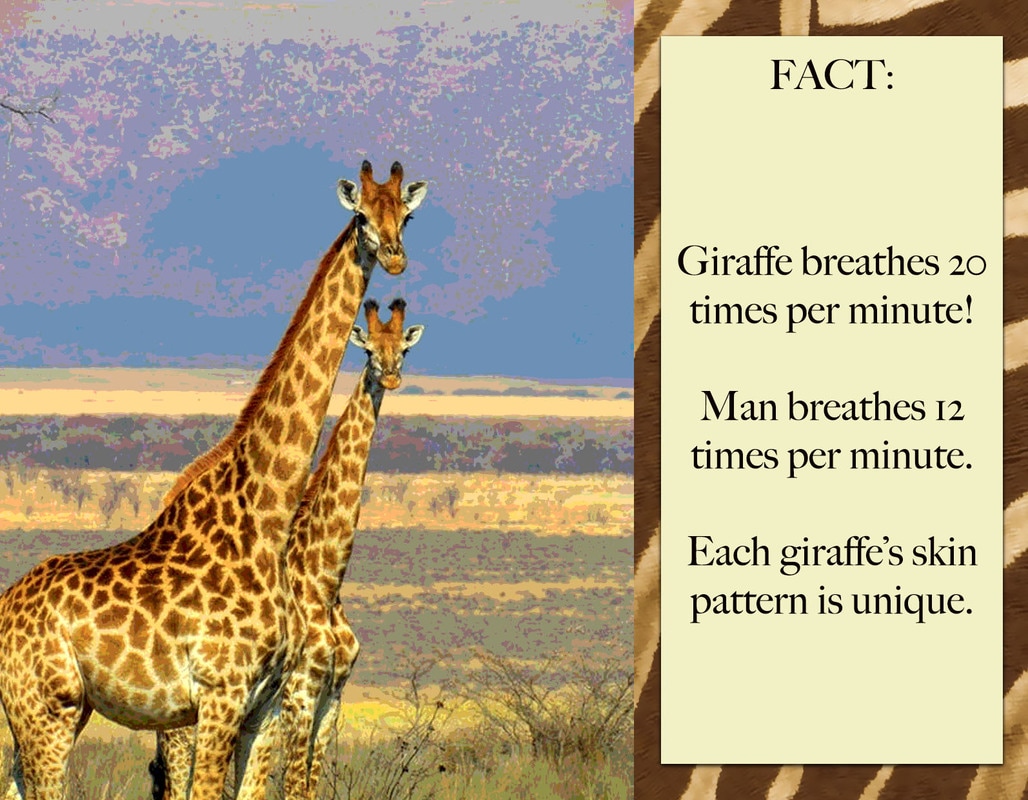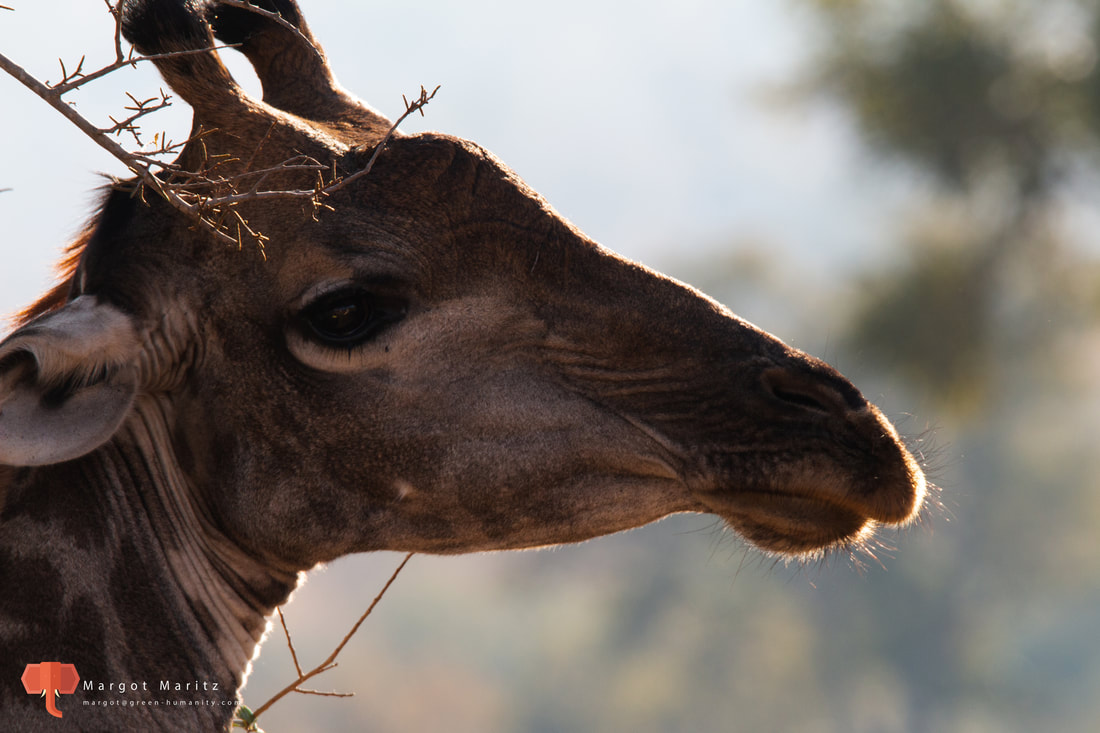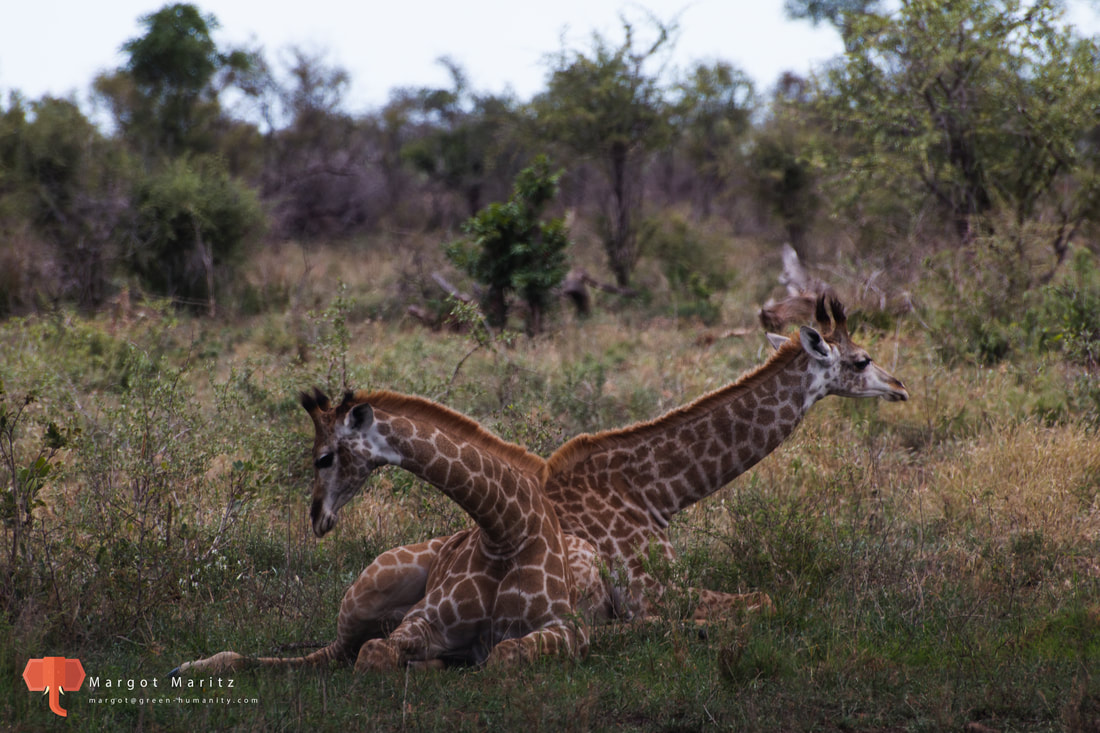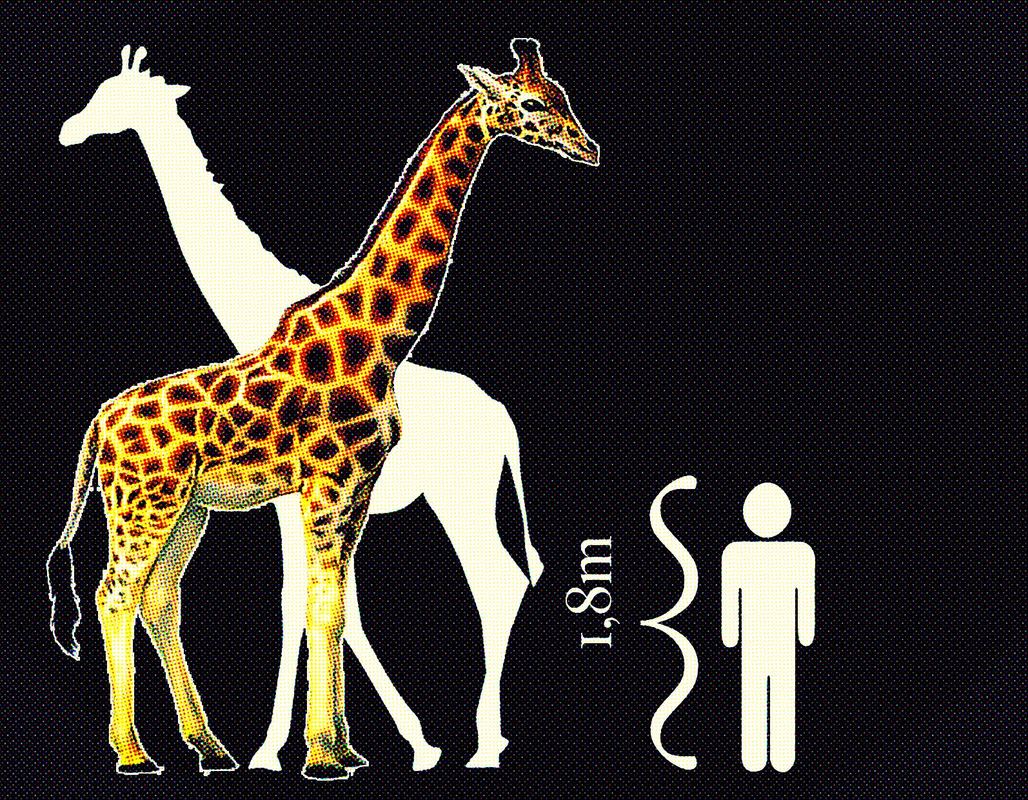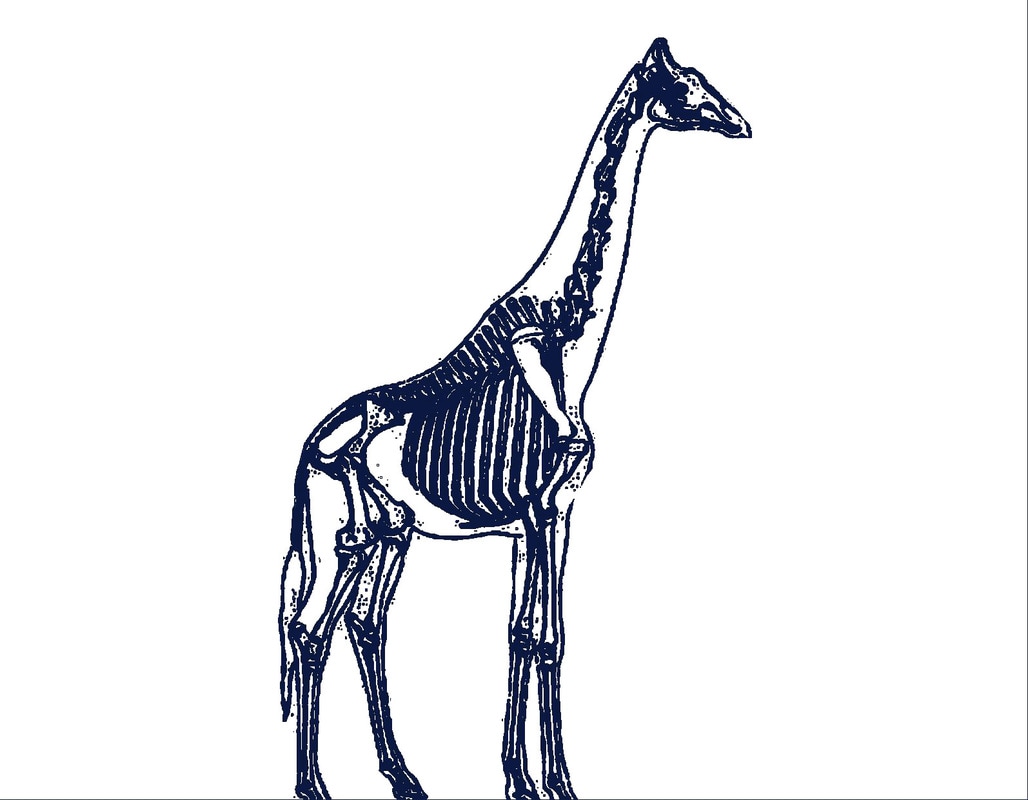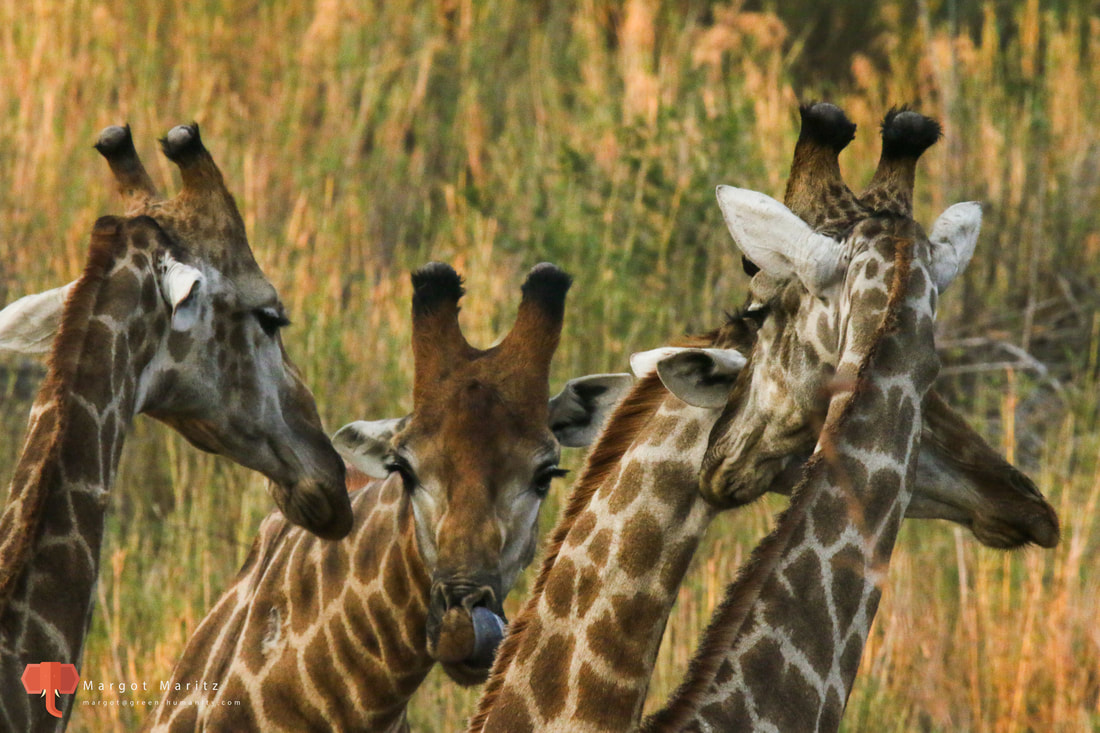Giraffe [Giraffa camelopardalis]
Physical Characteristics
The giraffe is the tallest animal in the world, attaining a height of 5.5m, its incredibly long neck accounting for much of its height. The long neck has resulted in a complex blood circulatory system, which is not yet fully understood by zoologists. Adult males generally reach a height of about 5 meters and females about 4,5 meters. Big males can weigh a massive 1 200 kilograms while females usually weigh some 800 to 900 kilograms. Their skin color is tan with light brown patches on females and dark brown patches on males. Both males and females have short horns covered in skin. Bulls are larger and usually darker. The bony growth resembling short horns on their heads are actually hair growth. The horns of Bulls are more symmetrical and much thicker than cows. Bulls usually has no tufts or hardly any compared to cows that have tufts of hair on the horns.
Habitat
Giraffe prefer open woodland and shrub savannah with enough trees that has palatable leaves, especially acacias which is a favorite food source.
Giraffe in South Africa occurs in the Kruger National Park National Park and throughout South Africa in provincial nature reserves and private game reserves. Historical distribution has been fragmented through hunting, farming and disease (rinder-pest). However, today conserved populations are thriving and have been widely reintroduced to private ranches and game reserves.
Behavior
Diet
Shrubs and leaves especially from acacia trees. Not water dependent but will drink if water is available. Because of their very long necks, Giraffes are able to feed on the foliage of trees that is not accessible to other herbivores. The long prehensile tongue is used to pull pods and leaves into the mouth which are then stripped from the stems with the spatulate incisor teeth.
Enemies
Humans, Lion, Leopard, Spotted Hyena, Leopard, Cheetah, Wild dogs, Nile Crocodile.
Interesting facts
Sources:
http://www.krugerpark.co.za/africa_giraffe.html
http://www.wildlifesouthafrica.com/blog/mammals-of-south-africa/giraffe-fact-file
Physical Characteristics
The giraffe is the tallest animal in the world, attaining a height of 5.5m, its incredibly long neck accounting for much of its height. The long neck has resulted in a complex blood circulatory system, which is not yet fully understood by zoologists. Adult males generally reach a height of about 5 meters and females about 4,5 meters. Big males can weigh a massive 1 200 kilograms while females usually weigh some 800 to 900 kilograms. Their skin color is tan with light brown patches on females and dark brown patches on males. Both males and females have short horns covered in skin. Bulls are larger and usually darker. The bony growth resembling short horns on their heads are actually hair growth. The horns of Bulls are more symmetrical and much thicker than cows. Bulls usually has no tufts or hardly any compared to cows that have tufts of hair on the horns.
Habitat
Giraffe prefer open woodland and shrub savannah with enough trees that has palatable leaves, especially acacias which is a favorite food source.
Giraffe in South Africa occurs in the Kruger National Park National Park and throughout South Africa in provincial nature reserves and private game reserves. Historical distribution has been fragmented through hunting, farming and disease (rinder-pest). However, today conserved populations are thriving and have been widely reintroduced to private ranches and game reserves.
Behavior
- Giraffes congregate in herds of up to 20 animals and usually one territorial bull is present.
- They are often found with Zebra, Blue Wildebeest and Impala.
- Giraffes are fairly social animals and get together in herds from time to time. However, there is no group bonding.
- Youngsters stay with a few adult females and the males are nomadic and move between groups of females.
- Because Giraffes do not have a fixed breeding season, males are always wandering in search of receptive females.
- The male's fight for dominance, and for the right to mate with females, is fascinating to watch.
- They use their long muscular necks to strike at an opponent's body and wrestle by twining their necks around each other.
- he loser is pushed off balance and the encounters very rarely lead to serious injury.
- Giraffes are generally quiet animals that go about their business with an air of serenity.
- Occasionally, when disturbed, they will snort and, when attacked by predators, they bellow.
- They are active both during the day and the night.
Diet
Shrubs and leaves especially from acacia trees. Not water dependent but will drink if water is available. Because of their very long necks, Giraffes are able to feed on the foliage of trees that is not accessible to other herbivores. The long prehensile tongue is used to pull pods and leaves into the mouth which are then stripped from the stems with the spatulate incisor teeth.
Enemies
Humans, Lion, Leopard, Spotted Hyena, Leopard, Cheetah, Wild dogs, Nile Crocodile.
Interesting facts
- They can run steadily at speeds of up to 55 km/h for quite a distance. Giraffes can deliver a very powerful and fast kick with front and back feet.
- An unmistakable square-toed print. Giraffes are prone to broken limbs caused by slipping on wet surfaces.
- There nine subspecies of giraffe in Africa, and some scientists are calling for some to be classified as separate species.
Sources:
http://www.krugerpark.co.za/africa_giraffe.html
http://www.wildlifesouthafrica.com/blog/mammals-of-south-africa/giraffe-fact-file
